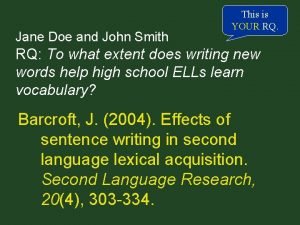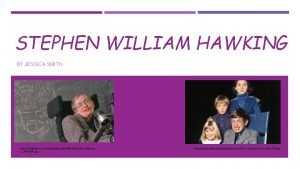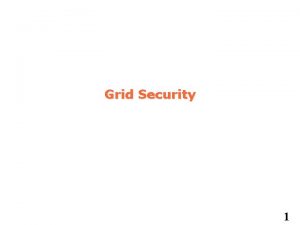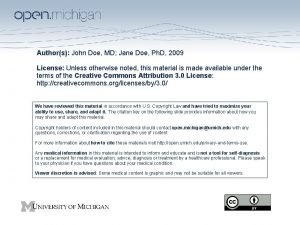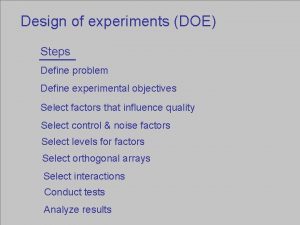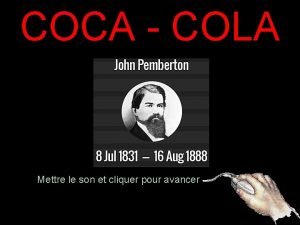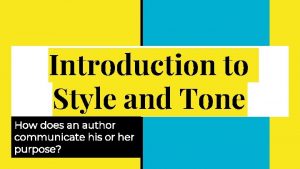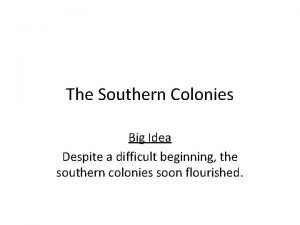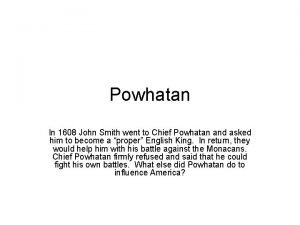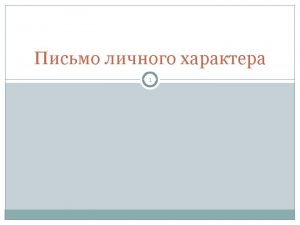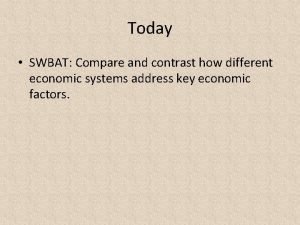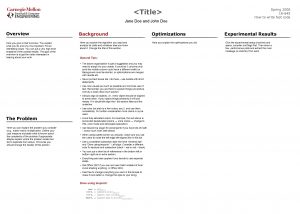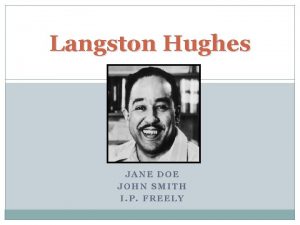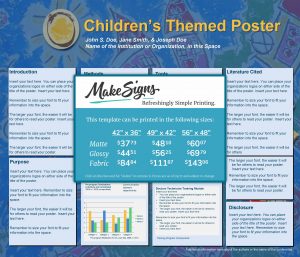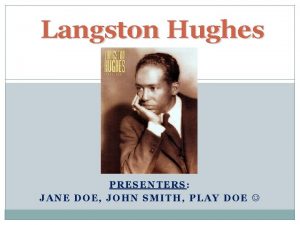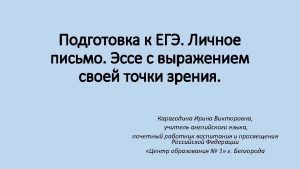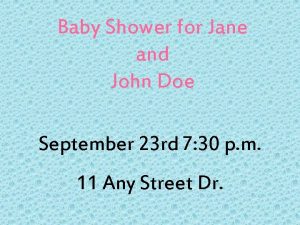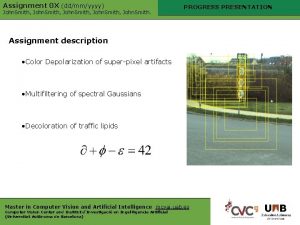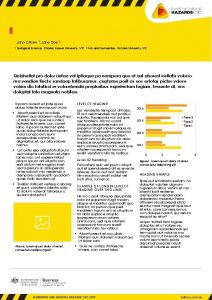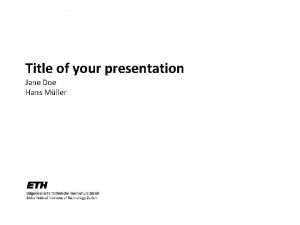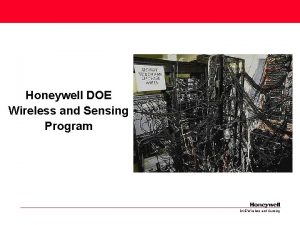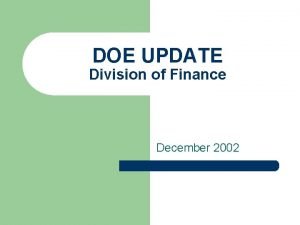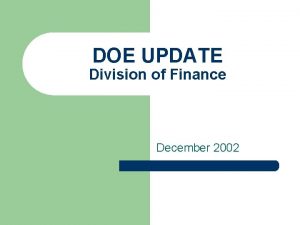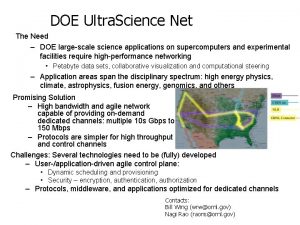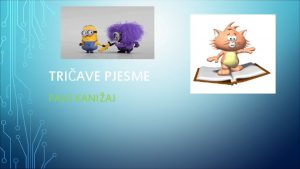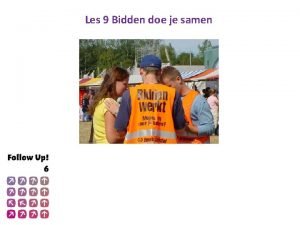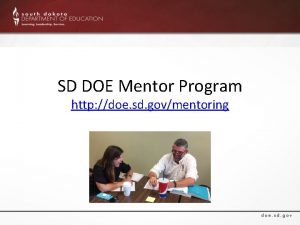Jane Doe and John Smith This is YOUR





















- Slides: 21

Jane Doe and John Smith This is YOUR RQ. RQ: To what extent does writing new words help high school ELLs learn vocabulary? Barcroft, J. (2004). Effects of sentence writing in second language lexical acquisition. Second Language Research, 20(4), 303 -334.

What is the Issue? Beginning of Introduction and literature review The effects on learning new second language (L 2) words when comparing writing words in a sentence vs. repetition of words in a word-picture task.

Potential factors affecting L 2 lexical acquisition • Semantic Elaboration: Focus on semantic (referential, meaningrelated) properties of an item in the input • Output = production: Writing ‘known’ or ‘new’ words in original sentences

Semantic Elaboration (SE) • Positively affects memory for L 1 ‘known’ words (e. g. Tressalt & Mayzner 1960; Levin et al. 1982) • Memory for known or new words depends on type of assessment (Pressley et al. 1982) – Reliance on form vs. meaning

Theories of Human Memory for Processing Input • Levels of processing (LOP): Depends on ‘depth’ of cognitive processing (Craik & Lockhart 1972) – More vs. less elaborate manipulation • Transfer appropriate processing (TAP): – Memory performance depends on processing: same on test as during learning? (Morris et al. 1977)

Theories of Human Memory for Processing Input • Type of processing-resource allocation (TOPRA): For high processing demands, semantic elaboration: – increases learning semantic properties of words – but decreases learning strucural properties – because processing resources are limited (Barcroft, 2000, 2002; Mc. Daniel & Kearney, 1984)

Semantic Elaboration Research in L 2 Word Learning • No positive effects on structural memory for new words = TOPRA (Brown & Perry, 1991; Prince, 1996) • Positive effects on ‘pseudoword’ learning (Coomber et al. , 1986) – But tasks may not have involved the expected amount of semantic elaboration

Mixed Effects of Output on L 2 Word Learning • No effects of translating new L 2 words into L 1 (Watanabe, 1997) • Negative effects of copying L 2 words (=structural) (Barcroft, 1999) • Positive effects of ‘modified output’ (Ellis & He 1999) Effect depends on type of learning task and test

The Present Study: Research Questions The paper’s RQs 1. Does writing new words in sentences affect L 2 lexical acquisition (L 2 la)? 2. If ‘yes, ’ does sentence writing decrease L 2 la? (b/c requires semantic processing) 3. If ‘yes, ’ are effects (decrease in L 2 la) short and long term?

Experiment 1 Beginning of method Participants • L 2 Spanish, L 1 English • 2 nd semester college students (n=44) Materials • 24 concrete, unfamiliar words, no cognates with English Exposure time and repetitions • No sentence writing: 24 sec. ; 4 exposures per word • Sentence writing: 48 sec. ; 1 exposure per word (See experiment 2!)

Experiment 1 Design and procedure 1. Pre-test: 24 new L 2 words 2. Treatment (everyone did both conditions): – Condition 1: Write words in original sentences (= semantic elaboration) – Condition 2: View word-picture repetitions (4 times) (=structural memory) 3. Post-tests: 1. After treatment 2. Two days later 3. One week later

Scoring and Analysis Dependent variables: • number of syllables correctly produced • number of words correctly produced Analysis • Repeated-measures ANOVA

Experiment 1: Results Beginning of results Syllables: Significant effects for time and condition, no interactions. Similar effect for # of words.

Discussion • Sentence writing has a negative, lasting effect on L 2 word learning • Supports TAP: Learning through sentence writing does not transfer to productive L 2 vocabulary test • Supports TOPRA: High processing demands of sentence writing decreases memory for structure of new words

Experiment 2 Participants • L 2 Spanish, L 1 English • 2 nd semester college students (n=10) Materials • 24 concrete, unfamiliar words, no cognates with English Exposure time and repetitions • No sentence writing: 24 sec. ; only 1 exposure per word • Sentence writing: 48 sec. ; 1 exposure per word Design and procedure • Similar to Experiment 1 • No third posttest

Experiment 2: Results Syllables: Significant effects for condition, not time; no interactions. No significant effects for # of words.

Discussion • Confirmation of results from Experiment 1 • Findings from Experiment 1 not due to differences in time of exposure or number of repetitions

Conclusions and Implications Overall discussion/ conclusions Sentence writing = semantic elaboration and output • Sentence writing can inhibit learning of structural properties of new words (not known words) • Overload of processing resources required in sentence writing divide attention for new word learning • Future research: Study independent effects of semantic elaboration vs. output; test learners of different proficiency levels, L 1 s and L 2 s, on different tasks

Discussion Question YOUR question to start class discussion Do you think that these findings have any pedagogical implications for TESOL? If so, what are they? If not, why?

References (all and only those Barcroft, J. (1999). Processing resources and L 2 lexical acquisition in three writing tasks. Paper presented at the Second Language Research Forum, Minneapolis, MN. in ppt) Barcroft, J. (2000). The effects of sentence writing as semantic elaboration on the allocation of processing resources and second language lexical acquisition. Unpublished doctoral dissertation, University of Illinois at Urbana-Champaign, Urbana, IL. Barcroft, J. (2002). Semantic and structural elaboration in L 2 lexical acquisition. Language Learning, 52, 2. [note: page number are missing in reference list] Brown. T. & Perry, Jr. F. (1991). A comparison of three learning strategies for ESL vocabulary acquisition. TESOL Quarterly, 25, 655 -670. Coomber, J. E. , Ramstad, D. A. & Sheets, D. R. (1986). Elaboration in vocabulary learning: A comparison of three rehearsal methods. Research in the Teaching of English, 20, 289 -93. Craik, R. I. M. & Lockhart, R. S. (1972). Levels of processing: A framework for memory research. Journal of Verbal Learning and Verbal Behavior, 11, 671 -84. Ellis, R. & He, X. (1999). The role of modified input and output in the incidental acquisition of word meanings. Studies in Second Language Acquisition, 21, 285 -301. Levin, J. R. , Mc. Corminck, C. Bl, Miller, G. E, Berry, J. K. & Pressley, M. (1982). Mnemonic vs. nonmnemonic vocabulary-learning strategies for children. American Educational Research Journal, 19, 121 -136. Mc. Daniel, M. A. & Kearney, E. M. (1984). Optimal learning strategies and their spontaneous use: The importance of task-appropriate processing. Memory and Cognition, 12, 361373. Morris, C. D, Bransford, J. D. & Franks, J. J. (1977). Levels of processing vs. transfer appropriate processing. Journal of Verbal Learning and Verbal Behavior, 16, 519 -33.

References Pressley, M. , Levin, J. R. & Miller, G. E. (1982). The keyword method compared to alternative vocabulary-learning strategies. Contemporary Educational Psychology, 7, 50 -60. Prince, P. (1996). Second language vocabulary learning: The role of context vs. translations as a function of proficiency. The Modern Language Journal, 80, 478 -93. Tressalt, M. E. & Mayzner, M. S. (1960). A study of incidental learning. Journal of Psychology, 50, 339 -47. Wattanabe, Y. 1997. Input, intake and retention: Effects of increased processing on incidental learning of foreign language vocabulary. Studies in Second Language Acquisition, 19, 287 -307.
 Jane doe or john smith
Jane doe or john smith Domestic homicide timeline
Domestic homicide timeline Stephen hawking william smith
Stephen hawking william smith Jane monckton smith
Jane monckton smith Jane smith
Jane smith John doe drivers license
John doe drivers license John doe md
John doe md Check writing simulation
Check writing simulation Edward keinholz's history as a planter
Edward keinholz's history as a planter Define john doe
Define john doe Ann eliza clifford lewis
Ann eliza clifford lewis Raccoon john smith
Raccoon john smith Carlos santana e john smith
Carlos santana e john smith James robinson inventor lunch pail
James robinson inventor lunch pail Syllepsis example
Syllepsis example How did john smith improve conditions in jamestown
How did john smith improve conditions in jamestown John smith 1608
John smith 1608 Give us your hungry your tired your poor
Give us your hungry your tired your poor Dear kate thank you for your letter
Dear kate thank you for your letter Compare and contrast your actual self and ideal self
Compare and contrast your actual self and ideal self Compare and contrast, karl marx and adam smith venn diagram
Compare and contrast, karl marx and adam smith venn diagram Doe inspector general
Doe inspector general
